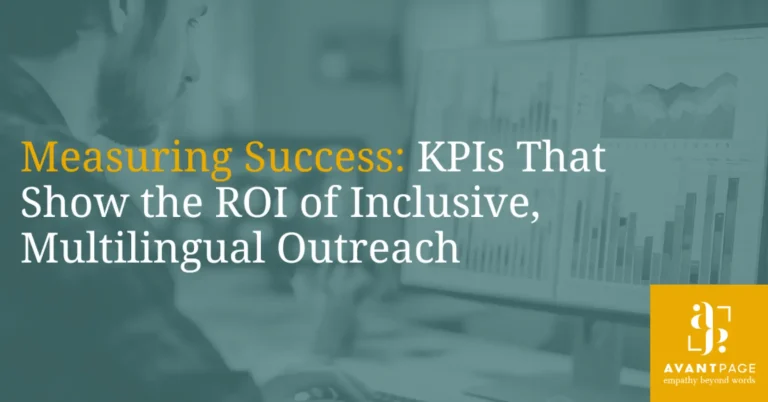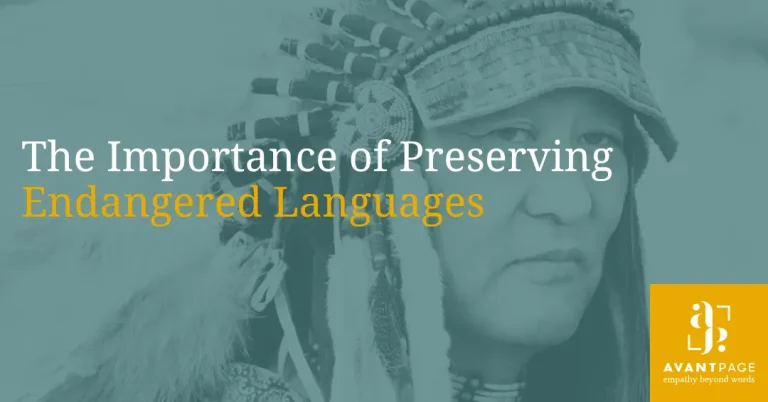OPI vs. VRI Interpretation: What to Know
When you need remote interpreting services, there are two key modalities to consider: over-the-phone interpreting (OPI) and video remote interpreting (VRI). Both enable you to communicate seamlessly with individuals with limited English proficiency (LEP) by connecting you to a wide network of interpreters.
These services are critical for organizations like healthcare providers and government agencies, ensuring they comply with language access requirements like Title VI of the Civil Rights Act of 1964 and Section 1557 of the Affordable Care Act.
You may find yourself asking whether OPI or VRI interpretation is better for you. In this blog, we’ll look at both options in-depth to help you decide which interpretation service meets your needs most effectively.
What are OPI and VRI Interpretation?
As the names imply, the key difference between OPI vs. VRI interpretation is how each one is delivered: OPI interpretation is done via phone call, while VRI is done via video call. Let’s take a closer look at how each one works and what kinds of scenarios they’re best suited for.
Over-the-Phone Interpretation (OPI)
With OPI interpretation, businesses can simply dial a hotline and get connected to an interpreter who works in the language pair needed. For example, an English-speaking doctor can request an interpreter who speaks Mandarin Chinese and English in order to communicate with a monolingual Mandarin-speaking patient. As with in-person service, the interpreter will listen to both parties and provide an interpretation of what each speaker says.
OPI is quick and efficient, as it doesn’t require any special equipment or know-how. It’s commonly used in on-demand settings where an organization doesn’t necessarily have prior knowledge that interpretation will be necessary — for example, in some medical visits or customer service hotlines. Due to the quick and convenient nature of OPI, 92% of hospitals reported that telephone-based interpreting solutions were the most accessible resource for language access services in a national survey conducted by the National Health Law Program.
However, OPI does have its limitations. Because the interpreter cannot see what’s going on, they aren’t able to take any visual cues into account. This means that it’s not possible to interpret signed languages via OPI. Additionally, complex conversations involving several different speakers may be difficult to interpret over the phone.
Video Remote Interpretation (VRI)
On the other hand, video remote interpretation incorporates video into the interpretation process. Instead of calling an interpreter on the phone, the interpreter joins a video call with the parties involved. VRI interpreters can be accessed via computer, tablet, or smartphone.
Like OPI, VRI is also commonly offered on-demand, though services may also be pre-scheduled for appointments for medical, legal, or government services. Because interpreters have access to certain visual cues, they may be able to provide more precise services, as these visual cues may clear up some uncertainty around ambiguous or imprecise language. VRI is also a must-have for any organization in need of a remote interpreter for signed languages like ASL.
VRI does come with some drawbacks — unlike standard phone calls, video calls require a reliable high-speed internet connection and video-compatible devices. Additionally, users of these services may need to have higher digital literacy than is required for OPI services.
Differences Between OPI and VRI
While OPI and VRI are both effective ways to access interpretation services remotely, they aren’t entirely interchangeable. In some instances, OPI will be your best option; in others, VRI is likely to be more efficient. The table below breaks down some of the key differences between OPI vs. VRI interpretation:
Over the Phone Interpretation (OPI) | Video Remote Interpretation (VRI) | |
| How is it accessed? | Phone call | Video call (via tablet, computer, smart phone, etc.) |
| What is it best for? | Quick, non-visual conversations | Settings requiring visual cues, such as sign language interpreting |
| What technology is needed? | Telephone | Video-compatible device with camera and reliable internet |
| What are the costs involved? | Costs for OPI are typically lower, as OPI does not require any special equipment. | VRI may be more expensive, as it requires more technological infrastructure. |
How to Choose Between OPI vs. VRI Interpretation
Choosing between OPI vs. VRI interpretation isn’t a one-size-fits-all decision. The right choice for your organization depends on the specific context in which interpretation services are needed, the technology you have available, and the type of communication you’re facilitating. Let’s break down key considerations to help guide your decision-making process:
- Communication complexity: Routine or straightforward interactions — like confirming appointments or answering customer questions — can often be handled effectively through OPI. However, when dealing with complex, emotional, or nuanced conversations, the visual support offered by VRI can enhance understanding and reduce miscommunication.
- Compliance with language access laws: Public-facing organizations must ensure compliance with federal, state, and local language access mandates. This means not only providing interpretation services, but also choosing the modality that offers equal communication access — especially for individuals who are deaf or hard of hearing, where VRI or in-person sign language interpreting is essential.
- Industry-specific needs: Some industries have strict requirements for communication accessibility. For example, healthcare organizations must comply with HIPAA and Section 1557 of the Affordable Care Act. In medical or legal settings where precision is critical and visual cues matter, VRI interpretation may be a better fit. Meanwhile, sectors like customer service or banking often rely heavily on OPI interpretation for quick, efficient multilingual support.
- Technical requirements: If your organization already has reliable internet, video-capable devices, and staff with sufficient digital literacy, integrating VRI can be seamless. However, in areas with limited bandwidth or minimal tech resources, OPI is typically a more practical choice.
- Preference of LEP individual: If possible, consult with the LEP individual who needs interpreting services to see if they have a preference for OPI or VRI. Considering their preferences helps your organization build a sense of trust and transparency, as it makes them feel more comfortable receiving your services.
- Budget: OPI services generally come at a lower cost because they require minimal infrastructure beyond a basic phone connection. If your organization frequently needs short, simple interpretation sessions, OPI may offer the best return on investment.
When to Use OPI
Here are a few use case scenarios for OPI:
- Customer service call centers handling multilingual inquiries
- Emergency response situations where rapid, no-frills communication is needed
- Financial or legal services providing over-the-phone client support
- Remote areas or fieldwork with limited internet connectivity
- Routine calls to confirm or reschedule appointments
When to Use VRI
Here are a few use case scenarios for VRI:
- Medical appointments where body language and facial expressions aid in diagnosis
- Business negotiations requiring a nuanced understanding of emotions and intent
- Courtrooms and legal proceedings demanding a high degree of interpretive accuracy
- Educational settings offering real-time classroom engagement for LEP students or parents
Implementation Strategies for Organizations
If you work with a large population of individuals with LEP, it’s likely you’ll need to integrate both OPI and VRI into your workflow. Let’s step-by-step look at how you can implement OPI or VRI interpretation services:
- Select a language service provider: Begin by researching a variety of language service providers. You’ll want to consider their specialties (i.e., if you work in healthcare, you’ll want to select a provider that specializes in medical interpretation) and languages offered. Once you’ve selected a provider, consult with them to determine whether you need OPI, VRI, or a mix of both.
- Train your employees: Many providers have their own technical set-ups for either modality, so it’s important to train your employees and make sure that they know how to access an interpreter when they need one. This is particularly important for VRI, as this service often requires a bit more digital literacy than OPI. If you plan to implement both modalities, it’s also a good idea to clearly document the scenarios in which each one will be used so that employees know when to access OPI vs. VRI interpretation.
- Develop a language access plan: Devise a standardized plan for how and when you’ll use OPI vs. VRI interpretation. Your language access plan should outline the specific use case scenarios for each as they relate to your organization’s work.
- Ensure compliance with industry-specific regulations: If you work in a highly regulated industry, be sure that your provider is able to offer interpreting services in a way that complies to these regulations. This could involve special cybersecurity protections or contracting interpreters that are based in the United States only.
Frequently Asked Questions About OPI vs. VRI Interpretation
What industries require OPI or VRI interpretation?
Pretty much any organization that works with LEP populations will require OPI or VRI interpretation services. These include, but are not limited to:
– Hospitals and other healthcare providers
– Insurance companies
– Government agencies and departments
– Legal offices
– Election offices
What is the difference between OPI vs. VRI interpreters?
OPI interpreting services are delivered via phone call, while VRI interpreting services are delivered via video call. The skills involved in both practices are fairly similar, though VRI interpreters may incorporate visual cues into their services. Additionally, signed languages can be interpreted via VRI or in-person interpretation.
How much do OPI and VRI services cost?
Costs vary by provider, language pair, and usage volume. OPI is typically charged per minute and tends to be more cost-effective for shorter interactions. VRI tends to have a slightly higher rate per minute than OPI, due to the video component but provides higher accuracy in complex conversations.
What are the main technical requirements for VRI?
To use VRI effectively, organizations need a reliable internet connection, a video-capable device (such as a tablet, smartphone, or computer), and secure video conferencing software. Organizations should also ensure compliance with data privacy regulations like HIPAA when using VRI in healthcare settings.
Can my organization use both OPI and VRI?
Yes, many organizations implement a hybrid approach, using OPI for routine calls and VRI for interactions requiring visual cues. This flexibility ensures efficient and effective communication while keeping costs manageable.
Summary: OPI vs. VRI Interpretation
While the difference between OPI vs. VRI interpretation may be obvious, it’s not always clear which one is better for different scenarios. In general, OPI is used for quick calls that don’t require the interpreter to take visual cues into consideration, while VRI is better for signed languages and more complex conversations.
If you’re unsure which one is best for your organization, consulting with a trusted language service provider is a good idea. At Avantpage, we offer both OPI and VRI interpreting services in more than 150 different languages — contact us today at (530) 750-2040 or [email protected] to learn more.


